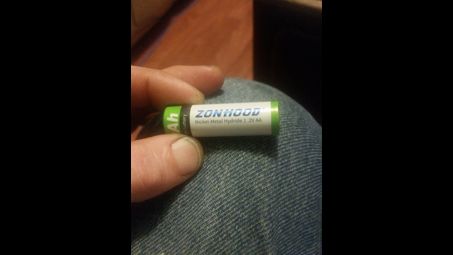What else can I help you with?
How many volts do 3 AA batteries supply?
A single AA battery will produce 1.5 volts. In series the voltage is additive. In parallel the voltage remains the same but the batteries total capacity is increased.
What voltage is a AA battery not effective?
AAA batteries are rated at 1.5V as are AA-C-D batteries. Once down to 1.3V or lower they are not much use,
Can rechargeable AA batteries replace LR 6 batteries?
Yes,because AA batteries are also a source of electricity and a source of battery can replace LR 6 battery..:))
If D batteries and AA batteries are both 1.5 volts why are D batteries stronger than AA batteries?
D batteries are larger than AA batteries, which means they contain more energy and a larger capacity to deliver power over a longer period of time. This results in D batteries being considered stronger than AA batteries, even though they have the same voltage.
Are 6 volt batteries made up of numerous AA batteries?
Yes
How many rechargeable AA batteries do you need to make 9v?
I believe that AA batteries are rated at 1.5 volts each, so if you were to take 6 of them and wire them together in series that would produce a circuit that's pushing 9 volts. But recharge AA batteries are only 1.2 volts per unit so a little lower voltage will be the result. I think most devices will still work on the lower voltage. Also these batteries will never last as long as the regular dry cell.
What has more power 4 1.5v AAA batteries or 2 1.5v AA batteries?
Well the AAA will have more voltage, but the AA might have more AMPs per battery. you need to give more information about the batteries.
Why is it safe to touch a AA battery?
Such batteries don't have a high voltage - only about 1.5 V.
Can a 0.9V 400MA solar panel be used to charge 2 AA batteries?
To charge a battery, the charger voltage must be higher than the battery voltage. If a AA battery (or any other) has a normal voltage of 1.2V the charger voltage must be at least 1.2V. The type of voltage supply and its current capability is immaterial. No, the charging voltage have to be larger than the battery voltage, to charge 2 AA batteries, that is 3 volt if connected in series, so a voltage of at least 4 volt is needed
How is the virtual boy controller powered?
6 AA batteries.
Can you add batteries of different voltages to a series for instance you have 5 AA batteries in a series can you solder a 9V to increase the output voltage without destroying the circuit?
Yes, but the 9V can't deliver as much current as the AA can. Internally a standard 9V contains 6 AAAA batteries. It would be best to use all AAAA cells or all AA cells, depending on current requirement of the load.
Is a sq 6 volt battery merely filled with AA batteries?
No. 4-AA batteries hooked together is a much smaller package than the 6 volt lantern battery.

